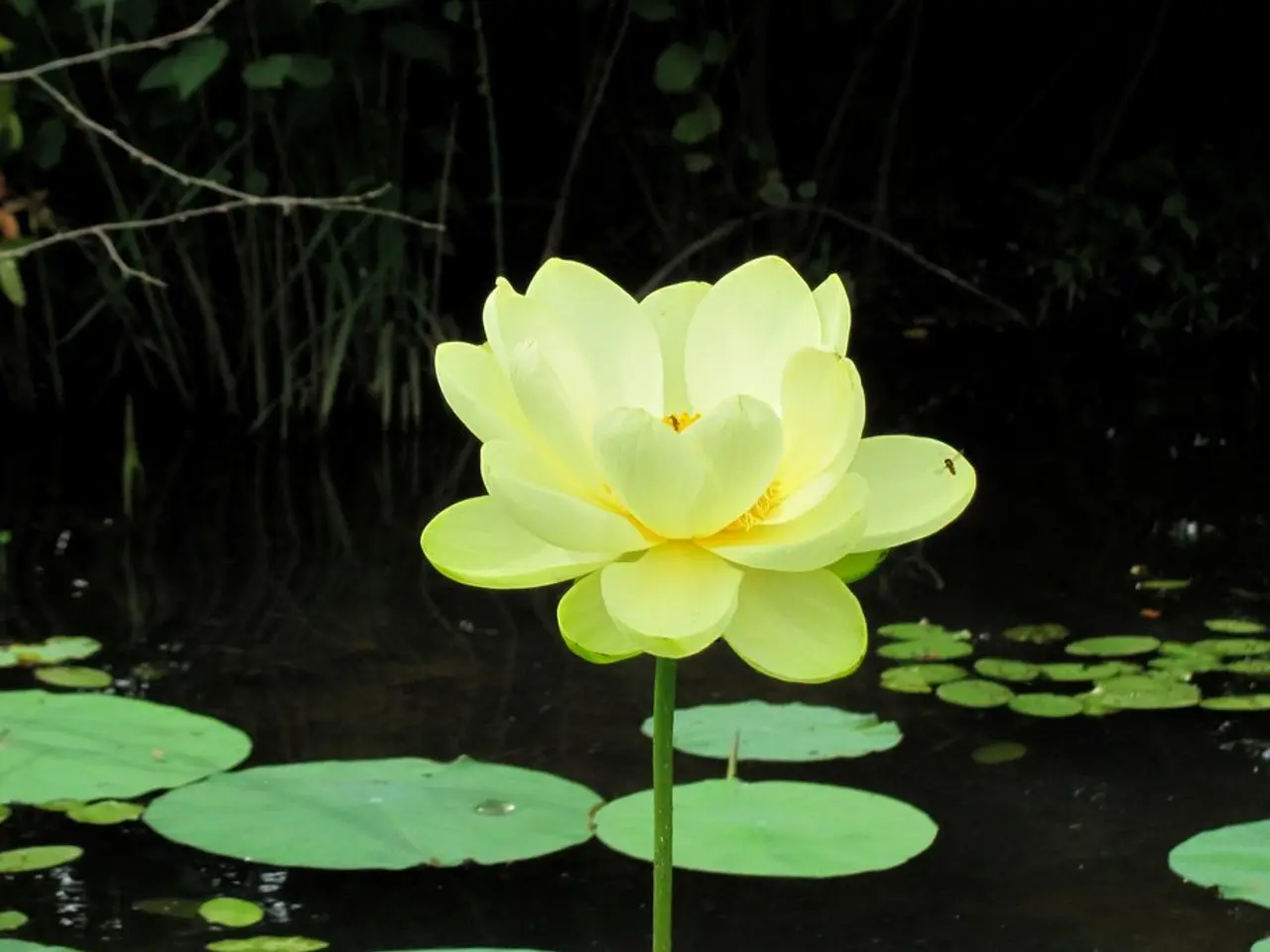Sacred Bloom: Blue Lotus, Representing Tranquility, Strength, and Recovery
Revived Ancient Wonders: The Blue Lotus Flower in Modern Spirituality and Wellness
The blue lotus flower (Nymphaea caerulea) is a captivating sight in the natural world, with its vibrant indigo-blue petals and golden center, blooming during the day and closing at night. This enchanting flower has a rich history, deep cultural significance, and an enduring role in spiritual rituals and holistic healing practices from ancient times to the modern era.
Historically, the blue lotus was most notably revered in ancient Egypt, where it symbolized creation, rebirth, and the sun. Egyptians frequently depicted it in temple art, tombs, and ceremonies as a sacred flower connected with deities and royalty, symbolizing divine beauty, transcendence, and the cycle of life. It was used in ritual contexts, social and sacred celebrations, and was sometimes infused in wine to induce mild euphoria, relaxation, and heightened awareness. These usages helped create states of calmness and spiritual transcendence, bridging secular and sacred experience.
Culturally, the blue lotus also holds profound symbolism in other spiritual traditions. In Buddhism, it represents purity, enlightenment, spiritual awakening, and beauty—the highest flower symbolizing wisdom emerging from delusion. In Jainism, it is a metaphor for purity and spiritual awakening, linked to deities and enlightened beings, often used symbolically to describe their divine attributes. In Chinese mythology, the lotus broadly symbolizes rebirth and spiritual transformation, exemplified by the story of Nezha whose resurrection involves a sacred lotus, linking it to Buddhist, Daoist, and Confucian ideals.
In modern holistic and spiritual use, blue lotus flowers are appreciated for their calming and mildly euphoric effects, aiding relaxation, sleep, meditative states, and spiritual exploration. They are commonly used as teas, tinctures, or ceremonial infusions and continue to be valued for their ability to foster intuition, dreamwork, and spiritual connection. Although modern science has not confirmed physiological aphrodisiac properties, the flower’s historical associations with love, intimacy, serenity, and ecstatic celebration persist in contemporary ritual and wellness contexts.
Ritual oils infused with blue lotus extract are used to anoint the body, enhance meditation, or set intentions during spiritual ceremonies. Blue lotus is often integrated into practices that promote inner peace and mindfulness. In the modern world, the blue lotus is a gateway to tranquility, insight, and transcendence.
The resurgence of plant-based wellness has made blue lotus a staple in herbal apothecaries and holistic shops. The blue lotus continues to captivate hearts and minds in modern wellness circles, and it is used in both spiritual rituals and holistic healing practices. The essence of blue lotus inspires a path toward balance and awakening, blending the mystical with the modern.
The resurgence of interest in holistic healing practices has led to the integration of blue lotus in modern home-and-garden apothecaries and wellness shops, emphasizing its potential therapeutic uses beyond spirituality. In the realm of mental health, CBD and blue lotus have been proposed as alternative therapies-and-treatments, leveraging their calming effects to aid anxiety and stress management.
As we delve deeper into the world of wellness, it becomes apparent that the blue lotus’ impact extends to the broader lifestyle domain. For instance, fashion-and-beauty enthusiasts incorporate blue lotus oil into their skincare routines for its soothing properties, contributing to a refreshed and rejuvenated complexion.
Moreover, home-and-garden enthusiasts cultivate blue lotus as an ornamental addition to ponds or indoor terrariums, appreciating its captivating blooms while enjoying its apparently peaceful scent. In doing so, they bring a piece of spiritual serenity into their daily living spaces.
Finally, the blue lotus' cultural and spiritual significance in ancient Egypt continues to resonate today, transcending time and permeating contemporary lifestyle trends. From its role in health-and-wellness practices to its presence in fashion-and-beauty products, the blue lotus remains a symbol of enchantment, spirituality, and beauty, intertwined with our modern lifestyles and daily experiences.





